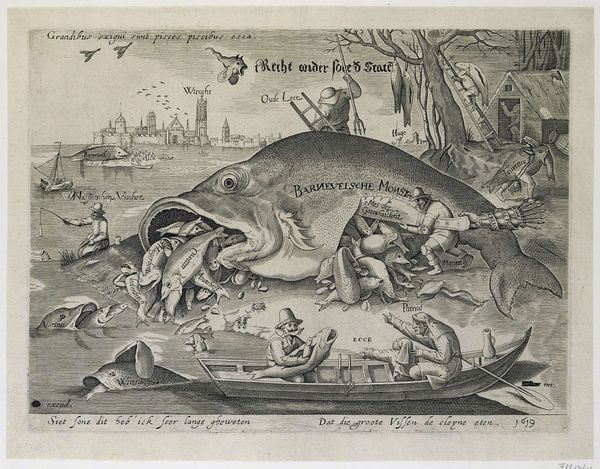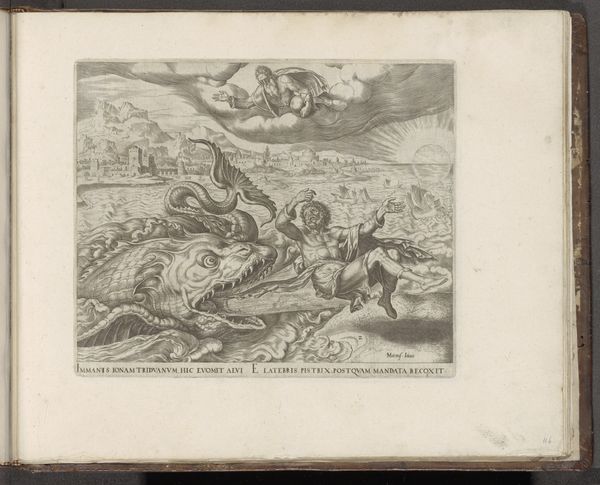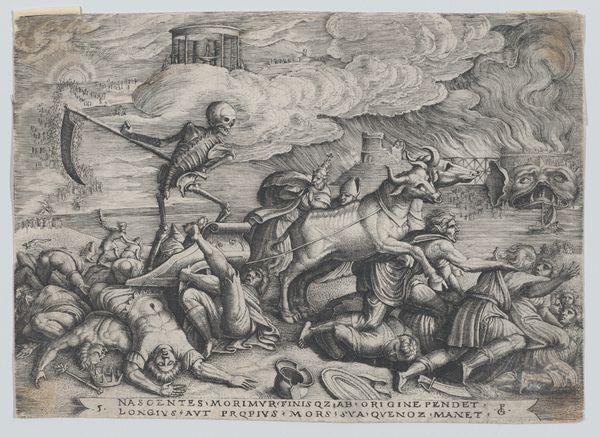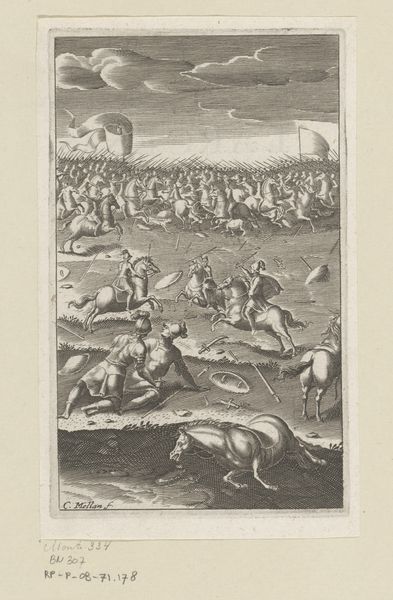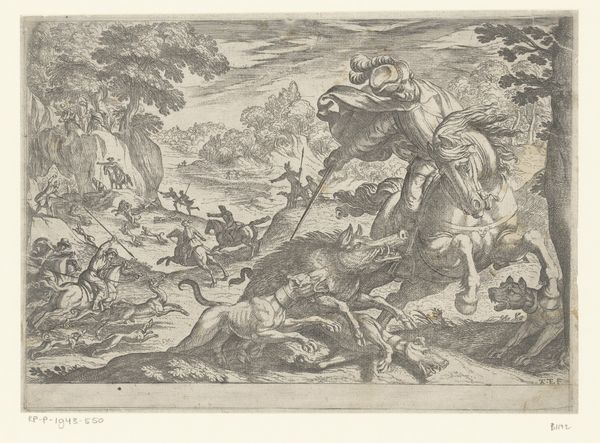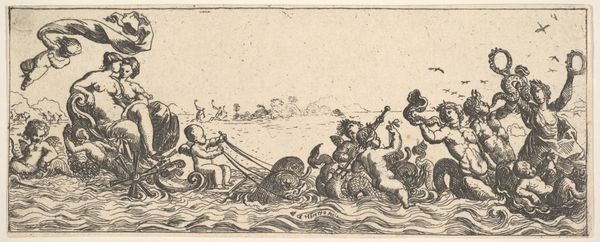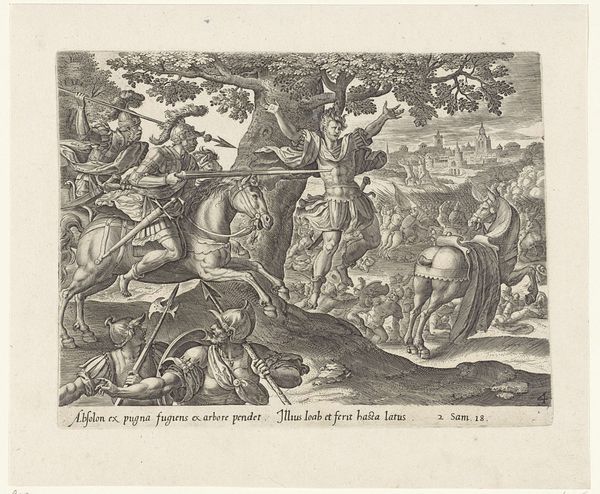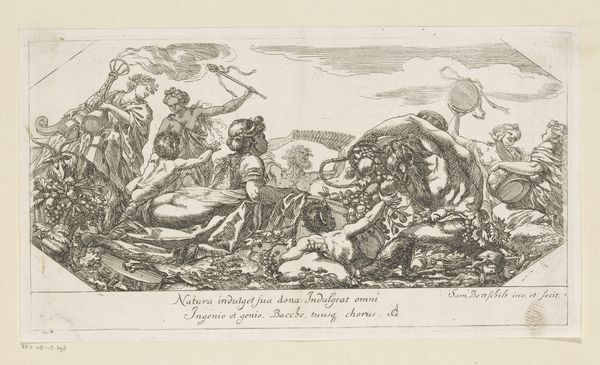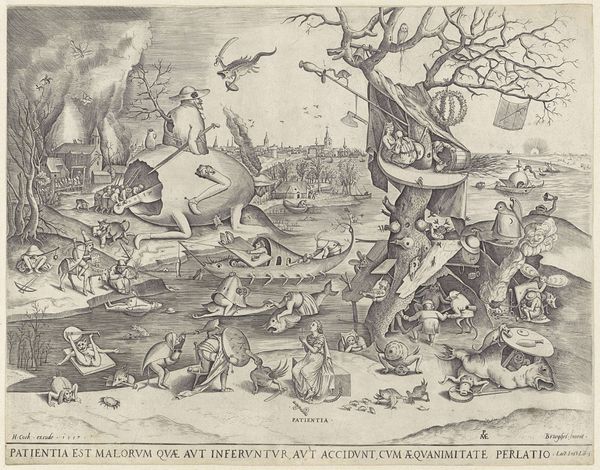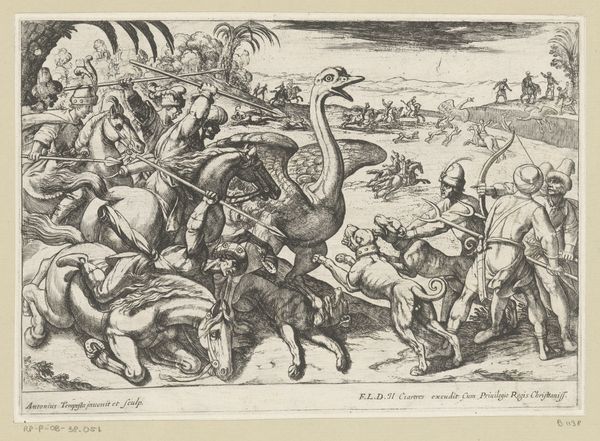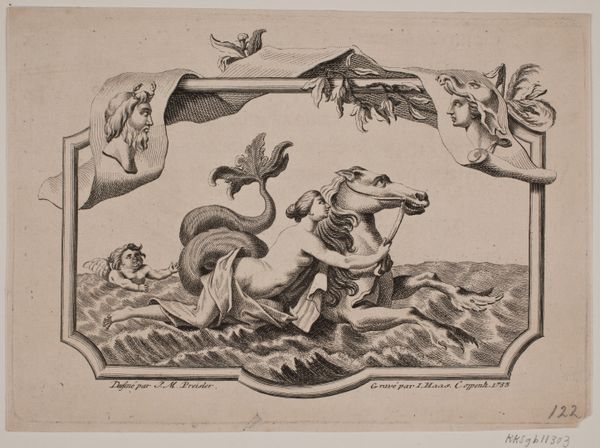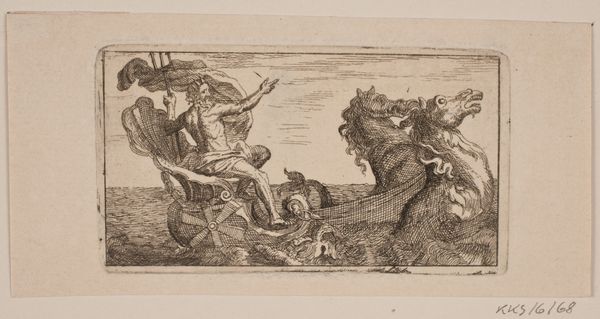
print, engraving
#
allegory
# print
#
landscape
#
figuration
#
11_renaissance
#
line
#
history-painting
#
northern-renaissance
#
engraving
Dimensions: 230 mm (height) x 270 mm (width) (monteringsmaal), 206 mm (height) x 250 mm (width) (plademaal)
Curator: Philips Galle created this engraving, "Jonah cast on shore by the whale" in 1566. What strikes you first about it? Editor: The density of the linework! It's almost overwhelming, creating a tumultuous scene. The stark contrast amplifies the drama of Jonah's expulsion from the sea creature. You can almost feel the grittiness of the engraving process itself. Curator: The imagery pulls heavily from the story of Jonah. Note the figure of God looking down from the clouds above – a symbol of divine command. The whale is, of course, a significant visual element representing both terror and salvation. Think of how a largely illiterate public internalized such messages. Editor: That whale is fascinating. Look at the detailing—less like a real whale and more like a fabricated monster! The engraver’s process emphasizes the whale's scales, sharp teeth, and overall artificiality. This couldn't possibly be mistaken for observational rendering; instead, the engraver chose a symbol, a construct. What would have been the social implications? Curator: Consider the intended audience. Prints like these were disseminated widely. The scene would have been instantly recognizable – the consequences of disobedience laid bare for all to see. This piece offers a cautionary lesson while celebrating the eventual mercy of God. Look at the inscription, it almost echoes as propaganda. Editor: Absolutely, the choice of material is everything. An engraving allows for mass production, making this story accessible and portable. Did Galle engrave this himself, or would it have been subcontracted? Either way, the labor embedded within underscores its reach into early consumer culture. Curator: Galle likely oversaw the whole process. His workshop produced countless prints which were circulated throughout Europe, shaping perceptions and reinforcing religious narratives. The line itself then carries significance—every etching helps perpetuate particular societal beliefs about religious stories. Editor: So much narrative power inherent to its materiality. Curator: Precisely! This artwork reminds us of the power of visual storytelling to impart lessons, offer solace, and even instill a bit of fear. Editor: And prompts us to reconsider the role of reproductive media in crafting early modern perceptions of religious authority.
Comments
No comments
Be the first to comment and join the conversation on the ultimate creative platform.
